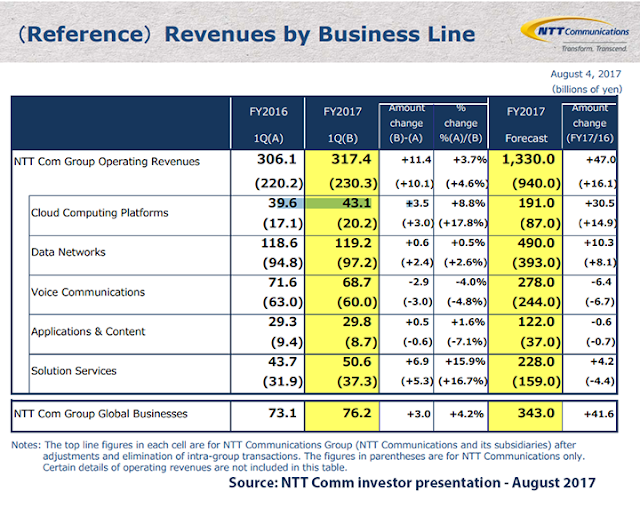Infinera and Seaborn Networks (Seaborn) reported a new record for highest spectral efficiency on an ultra-long-haul subsea cable.
Seaborn owns and operates the new Seabras-1 submarine cable, which spans 10,600-km and offers a direct connection between São Paulo, Brazil and New York City. Seabras-1, which recently entered commercial service, is the longest uncompensated cable connecting North and South America. It has multiple branching units and is designed to provide additional route diversity to Virginia Beach, Miami, St. Croix, Fortaleza, Rio de Janeiro, southern Brazil and Cape Town. The system is powered by Infinera’s new XTS-3300 meshponders.
To achieve the new benchmark for highest spectral efficiency, Infinera and Seaborn conducted an 8QAM trial at 4.5 bits per second per hertz on the Seabras-1 cable. Infinera and Seaborn validated the performance of the Infinera XTS-3300 meshponder featuring the Advanced Coherent Toolkit (ACT) on the Seabras-1 submarine cable, helping Seaborn to maximize the return on its cable assets.
 The XTS-3300 is based on Infinera’s Infinite Capacity Engine 4 (ICE4) and is optimized for long-haul subsea applications. Infinera said its ICE4 technology incorporates unique technologies to boost capacity-reach performance including digitally synthesized Nyquist subcarriers, enhanced pre- and post-dispersion compensation, improved non-linear tolerance and SD-FEC gain sharing which is only possible with dual-channel DSPs. These capabilities collectively support up to 18.2 terabits per second per fiber for distances over 10,000 km, powered by ICE4’s leadership in spectral efficiency.
The XTS-3300 is based on Infinera’s Infinite Capacity Engine 4 (ICE4) and is optimized for long-haul subsea applications. Infinera said its ICE4 technology incorporates unique technologies to boost capacity-reach performance including digitally synthesized Nyquist subcarriers, enhanced pre- and post-dispersion compensation, improved non-linear tolerance and SD-FEC gain sharing which is only possible with dual-channel DSPs. These capabilities collectively support up to 18.2 terabits per second per fiber for distances over 10,000 km, powered by ICE4’s leadership in spectral efficiency.
“This is an impressive achievement that far surpasses what we expected. Infinera has distinguished itself as an industry leader in delivering outstanding subsea optical performance,” said Larry W. Schwartz, Chairman and CEO, Seaborn Networks. “The Infinera XTS-3300 meshponders deliver industry-leading performance over Seabras-1 and validate Infinera’s technology leadership in subsea transmission. The capacity upgrade maximizes our return on investment and further underscores the uniqueness of Seaborn’s capacity on Seabras-1.”
“We are delighted with the performance of the XTS-3300 and the Infinite Capacity Engine 4 for subsea applications. The XTS-3300 delivers industry leading capacity-reach performance for our subsea customers where spectral efficiency is paramount and bandwidth demand is growing at more than 45 percent per year,” said Dave Welch, President and Co-Founder, Infinera.
Seaborn owns and operates the new Seabras-1 submarine cable, which spans 10,600-km and offers a direct connection between São Paulo, Brazil and New York City. Seabras-1, which recently entered commercial service, is the longest uncompensated cable connecting North and South America. It has multiple branching units and is designed to provide additional route diversity to Virginia Beach, Miami, St. Croix, Fortaleza, Rio de Janeiro, southern Brazil and Cape Town. The system is powered by Infinera’s new XTS-3300 meshponders.
To achieve the new benchmark for highest spectral efficiency, Infinera and Seaborn conducted an 8QAM trial at 4.5 bits per second per hertz on the Seabras-1 cable. Infinera and Seaborn validated the performance of the Infinera XTS-3300 meshponder featuring the Advanced Coherent Toolkit (ACT) on the Seabras-1 submarine cable, helping Seaborn to maximize the return on its cable assets.
 The XTS-3300 is based on Infinera’s Infinite Capacity Engine 4 (ICE4) and is optimized for long-haul subsea applications. Infinera said its ICE4 technology incorporates unique technologies to boost capacity-reach performance including digitally synthesized Nyquist subcarriers, enhanced pre- and post-dispersion compensation, improved non-linear tolerance and SD-FEC gain sharing which is only possible with dual-channel DSPs. These capabilities collectively support up to 18.2 terabits per second per fiber for distances over 10,000 km, powered by ICE4’s leadership in spectral efficiency.
The XTS-3300 is based on Infinera’s Infinite Capacity Engine 4 (ICE4) and is optimized for long-haul subsea applications. Infinera said its ICE4 technology incorporates unique technologies to boost capacity-reach performance including digitally synthesized Nyquist subcarriers, enhanced pre- and post-dispersion compensation, improved non-linear tolerance and SD-FEC gain sharing which is only possible with dual-channel DSPs. These capabilities collectively support up to 18.2 terabits per second per fiber for distances over 10,000 km, powered by ICE4’s leadership in spectral efficiency.“This is an impressive achievement that far surpasses what we expected. Infinera has distinguished itself as an industry leader in delivering outstanding subsea optical performance,” said Larry W. Schwartz, Chairman and CEO, Seaborn Networks. “The Infinera XTS-3300 meshponders deliver industry-leading performance over Seabras-1 and validate Infinera’s technology leadership in subsea transmission. The capacity upgrade maximizes our return on investment and further underscores the uniqueness of Seaborn’s capacity on Seabras-1.”
“We are delighted with the performance of the XTS-3300 and the Infinite Capacity Engine 4 for subsea applications. The XTS-3300 delivers industry leading capacity-reach performance for our subsea customers where spectral efficiency is paramount and bandwidth demand is growing at more than 45 percent per year,” said Dave Welch, President and Co-Founder, Infinera.
























